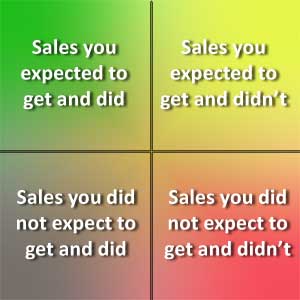Much has changed in the past 30 years. Flat screen TVs overtook those hulking tubes. Phones and computers are now mobile, and basically one in the same.
How we buy and sell products also has changed. The buyer’s journey has taken a fundamental shift in that it is now disengaged from the sales process. Prospective customers no longer have to go to dealerships, look at magazine ads, or circle business reply cards.
Today’s buyers start online, investigating product reviews and learning about your company. There are new techniques which allow you to gather clues about these interested prospects, but for the most part, they’re searching in the background.
And you can’t blame them for taking that route. From the comfort of their own living rooms, buyers can submit a few preferences to websites like BuyerZone.com or GlobalSpec.com, and they’re immediately given several brands to choose from, along with the location of the nearest dealers. No phone calls, no trade shows, and consequently, no relationship building.
So, how can you compete when buyers are served the information they want and need at the click of a mouse? Savvy companies cut through the online noise by ensuring they can proactively reach out to qualified, interested prospects, rather than cross their fingers and wait for buyers to act first.
What is a qualified lead?
Companies define qualified leads differently. Some clients want specific socioeconomic or other reporting data appended to the leads to decide their worthiness, and we can do that. When the data marker reaches a certain level, the lead is distributed to the sales team who can then get in touch with the prospective buyer before the competition has a chance to act.
Some buying signals are stronger, such as when the interested buyer types, “Have someone call me!” in a web form comment section. These buyers have a need and want to be contacted immediately. Delaying contact means they’ll be off to another vendor within days or even hours, so they’re sent to the sales team immediately.
We typically have solid evolving discussions with our clients to determine how their prospects should be qualified. Specific measures are set as a baseline, and the expectation is that we’ll work together to fine tune those criteria as we go along. We encourage making strategic changes to the lead-qualifying algorithms as the program matures. If your warm leads are outselling hot leads, you know you have a problem. If there’s activity within the cold leads, the leads aren’t being qualified correctly.
Every quadrant is important, and we find the third quadrant (Sales you didn’t expect to get and did) most interesting – it requires a closer look into your lead qualification criteria.
But that’s what we’re here for – to help your marketing teams determine the most qualified leads and deliver them at the right time into the capable hands of your sales team most effectively.
How your company can be proactive
Leads are not cheap, so it’s crucial to make sure the leads you spend time and money to obtain are qualified. It’s important to gain an alignment on what a qualified, actionable lead looks like.
The easy thing to do – and we hear it from companies all the time – is to send all the leads that are collected to the sales team. Clients say, “The sales team doesn’t make money unless they sell, and they are best qualified to sort through their own leads.” In turn, sales teams often complain that the marketing team sends them so much chafe that they can’t find the wheat, so they ignore all the leads and prospect on their own. That’s an inefficient use of time and money.
In effective organizations, the sales team receives only properly qualified leads. In exchange, the sales team acts on those leads in a specified amount of time. If your goal is quick action with interested prospective buyers, only qualified leads should be sent to the sales team. We can provide that ideal scenario for your sales team and help your sales process run smoother and more efficiently.


